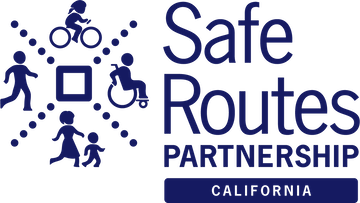Balancing California School Start Times and Walking and Biking Safety
In recent months, the Safe Routes Partnership has solicited input from constituents throughout California about the potential impact of SB 328, which would require middle and high schools to start no earlier than 8:30 a.m. We received input from stakeholders on all sides of the legislation and have done some careful research and consideration of the issues.
Youth Leaders Engage Legislator in Muscoy
Last month, a group of youth and community residents initiated a meeting with Assemblymember Eloise Gómez Reyes of the 47th District in San Bernardino County. Youth representatives from the group Soar IE envisioned an initiative for safer sidewalks around neighborhood schools in Muscoy. Muscoy is unincorporated area of San Bernardino that has a CalEnviroScreen pollution burden profile of 96-100%, is low-income, and the population is 82 percent Latinx.
SCAG requests feedback on its Public Participation Plan before April 21st
On February 21st, the Southern California Association of Governments (SCAG) released a draft of their Public Participation Plan and is currently soliciting feedback until April 21st. SCAG is responsible for developing plans like the Regional Transportation Plan Sustainable Communities Strategies and the Public Participation Plan is a critical guide for how SCAG will interact and gather input from public stakeholders The updated plan includes practices and methods fo
Morongo Valley Basin's Active Transportation Plan Integrates Art into Safe Routes to School
The Morongo Valley Basin in Southern California, which includes the areas of Joshua Tree, Yucca Valley and Twentynine Palms in San Bernardino County, is embarking on the development of an Active Transportation Plan. The Morongo Valley Active Transportation Plan (MV Plan) has developed a stakeholder committee to discuss and provide major feedback for the plan--which will include Safe Routes to School components and walking/biking connections to Joshua Tree National Park.
Gov. Brown Fails to Add Environmental Justice Expertise to CTC
Last fall, equity and environmental justice advocates were pleased at the passage of AB 179. The legislation mandated reform of the California Transportation Commission (CTC) board and placed requirements to ensure diverse representation, including experience working in disadvantaged communities. Despite the promising requirements written into AB 179, Governor Brown just re-appointed two incumbents who do not meet the criteria of equity or climate justice champions.
Active Transportation Program Applications Nearly Final
The California Transportation Commission (CTC) held the final public workshop for Cycle 4 of the Active Transportation Program on March 1, releasing the latest draft applications the night before. While we had initially pushed to retain standalone questions on public health, we had agreed to a compromise to have public health addressed in the Statement of Need question. We were heartened to see much of our compromise language for those questions adopted, even though our suggestions for questions pertaining to addressing the need were apparently not included this round.
Pushing for Cap and Trade Funding for Active Transportation
In late February, we joined our partners in the Sustainable Communities for All (SC4A) Coalition for a lobby day at the State Capitol, meeting with staff in the Governor’s Office, State Senate and State Assembly to discuss how to spend revenues from California’s Cap and Trade program.
March is Meetings Month!
A number of state agencies are having public input meetings this month. We’ll be there, and hope to see you too!
Get Involved in our Active Transportation Networks!
The Safe Routes Partnership facilitates regional active transportation networks (ATNs) in several locations throughout California with quarterly meetings. These ATNs serve as an informational hub for community based organizations and public agencies to share information on best practices and upcoming funding competitions and to engage in increasing active transportation investments and policy.


